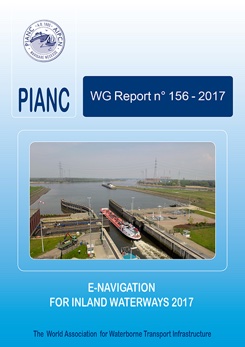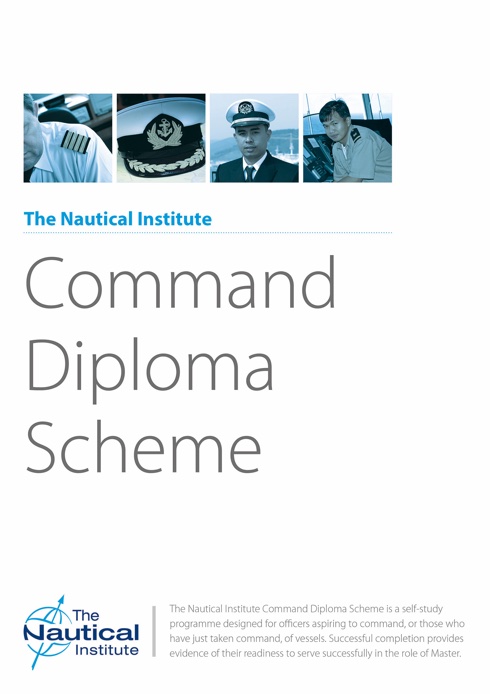HMS Enterprise returns home
 photo: UK Crown Copyright 2017©
photo: UK Crown Copyright 2017©
On 18 April HMS Enterprise (H88) returned home after an epic 35-month deployment. In almost three years she steamed 150,000 nautical miles, visited 20 countries while conducting maritime security operations, protecting Britain’s economy and rescuing those in danger.
With a 78-strong ship’s company the specialist survey ship Enterprise was at the heart of operations to prevent people-smuggling in the Mediterranean. She evacuated more than 200 British citizens from Libya, rescued 9,180 people attempting to undertake deadly crossings of the Mediterranean and destroyed 117 unseaworthy vessels used by people traffickers.
Galileo Search & Rescue

Europe’s Galileo satellite navigation network does more than let the user navigate – it is also helping save lives. On 6 April the spotlight was cast on Galileo’s Search and Rescue service, which pinpoints those in distress on land or sea.
This service is Europe’s contribution to the Cospas-Sarsat international satellite-based locating system that has helped to rescue more than 42 000 people since 1982 – the only system that can independently locate a distress beacon wherever it is activated on Earth, it is said. The service was formally premiered on 6 April, a date chosen to highlight the Cospas-Sarsat 406 MHz signal.

e-Navigation for Inland Waterways 2017
A new PIANC Working Group 156 (WG 156) publication titled: e-Navigation for Inland Waterways 2017 deals with updating the PIANC River Information Services (RIS) Guidelines of 2004.
When PIANC Working Group 125 finished its report in 2011, it concluded that River Information Services might benefit from concepts in the maritime world such as e-Navigation, e-Maritime, and Vessel Traffic Management (VTM). In addition it was found that in several regions, for example the Westerscheldt River, the interaction between seagoing and inland transport was increasing.
It was apparent there was a need to investigate these themes on a global level. For this reason, PIANC was the most suitable organisation to support such research, and consequently, PIANC Working Group 156 was initiated with its first meeting on 23 September 2013 in Maastricht, the Netherlands.
New eMaritime Group website and mobile App launched
The new eMaritime Group has been launched, the world’s first single website and app bringing together all maritime discounts under one website and mobile app. This was announced on 7 April by IAIN Corresponding Member ECDIS Ltd.
The website has been three years in the making. This is reflected in its diversity and sheer range of choices: from cost-effective online training to heavily discounted simulators and MCA approved STCW courses. Then there are online only distribution of cheap S57 ENC charts and a free social network for seafarers offering hundreds of jobs, regulations, and the latest breaking news.
US Navy fires Tomahawk missile 7 April 2017
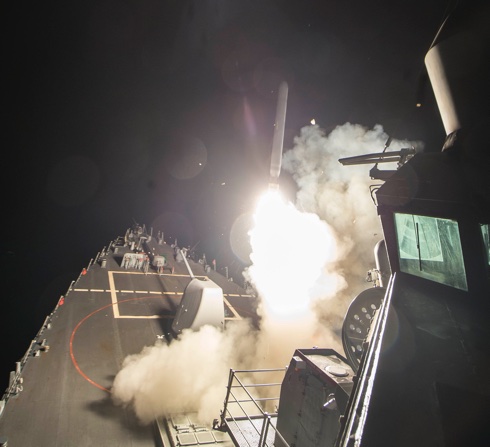
Our illustration shows the guided-missile destroyer USS Ross (DDG 71) firing a Tomahawk land attack missile on 7 April 2017. This class of missile is a long-range, all-weather, subsonic cruise missile.
Introduced by McDonnell Douglas in the 1970s, it was initially designed as a medium to long-range, low-altitude missile that could be launched from a surface platform.
The Tomahawk is a highly accurate, GPS enabled precision weapon that has been used over 2,000 times in combat, and flight tested more than 500 times. The latest variant (Tomahawk Block IV) includes a two-way satellite data-link that enables the missile to be retargeted in flight to pre-programmed, alternate targets. The Block IV design was initiated as both a cost savings and a capability improvement effort.
Major steps taken in developing international e-Navigation standards
Denmark is striving to digitalise the maritime industry and now a project led by the Danish Maritime Authority and supported by the EU has taken a major step towards a global standard for digital data exchange. This was reported by the Danish Maritime Authority (DMA) in a communiqué of 6 April 2017.
IALA’s Committee on e-Navigation have just agreed on a proposed guideline for specifications of digital data exchange. The guideline has been developed in DMA’s EfficienSea2 project. The new guideline will provide a common language on how to deliver digital data services and make it possible to use the same digital data stream across equipment and regions.
UK light dues cut
In the UK House of Commons (Lower House) on 30 March Minister of State at the Department of Transport, John Hayes issued a written ministerial statement:
‘A strong and growing maritime industry is vital to the economy of the United Kingdom and it is critical that we treasure and protect this vital artery if we are to remain a world-leading maritime centre.’
‘The work of the General Lighthouse Authorities, which provide and maintain marine aids to navigation and respond to new wrecks and navigation dangers in some of the busiest waters in the world, is crucial to underpinning that vision whilst maintaining our vigorous safety record and continuously improving standards of safety.’
‘Light dues rates will continue to be reviewed on an annual basis to ensure that the General Lighthouse Authorities are challenged to provide an effective and efficient service which offers value for money to light dues payers while maintaining the highest levels of safety for mariners.’
New ECDIS reference cards now available
On 28 March IAIN Corporate Member ECDIS Ltd released a range of Type Specific ECDIS Reference cards, on-line produced Type Specific ECDIS SMS Procedures and an update to their ECDIS Check Off Cards inspectors and investigators, including questions and answers on all the leading systems.
It is understood that the unique aspect of the reference cards is the ability to customise various cards to ensure accuracy with each company policy. This customisation is completed by way of a simple online form. Such customisation includes confined, coastal and open settings for every menu item as well as watermarking which can ensure no misuse onboard.
UK Transport Committee launches new inquiry on drones
In the Westminster Parliament, the Lower House Transport Committee has launched a new inquiry to consider how the benefits of drone technology can be maximised within a robust safety framework.
Use of civilian drones in the UK is increasing. Drones are now used for a wide range of purposes and there is a significant scope for expansion in the future. A report by PwC found that the emerging global market for business services using drones is valued at over $127 billion. However, the increasing use of drones also raises a number of regulatory and operational issues. This includes risk to other aircraft – an area where laser pens are also an increasing concern.
The Committee would be grateful to receive written evidence submissions by 26 May 2017.
The Nautical Institute launches Command Diploma Scheme
The Nautical Institute’s flagship distance learning programme, the Command Diploma Scheme, was launched on 24 March in Singapore at the first of this year’s Nautical Institute Command Seminars.
The scheme is intended for those about to take command as well as those who have just done so. At its core are the subjects that existing and aspiring Masters have identified as areas of concern: onboard leadership and management, navigation and shiphandling, ship’s commercial business and coping with emergencies.
NI’s Command Diploma Scheme provides a practical way for aspiring officers to prepare themselves for the responsibilities and realities of command at sea. It comprises a well thought-out programme of self-directed learning, with challenging practical assignments plus a final essay and interview, all designed to take the candidate far beyond the minimum requirements of STCW. Candidates benefit from having their work assessed by experienced mariners, all of whom are senior members of The Nautical Institute.
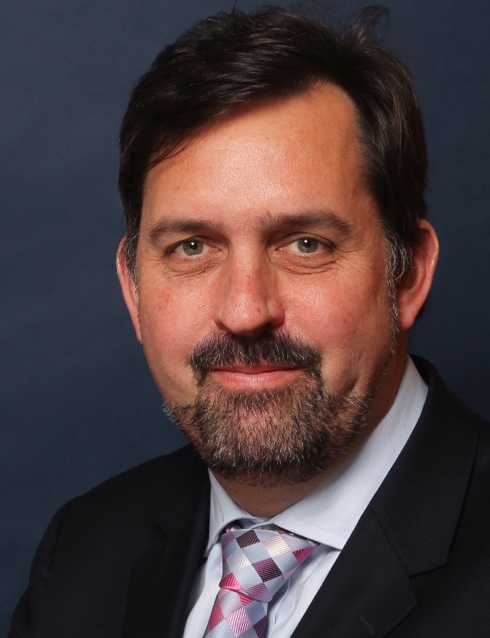
‘Assuming command of a ship is a huge responsibility; you become responsible for the lives of your crew, the ship, your cargo, the commercial success of your company and of course the environment. The NI Command Diploma Scheme is a culmination of many experienced Masters’ knowledge brought together to help the Master-to-be prepare as best possible for this ultimate challenge.’
Welcome Honourable Company of Air Pilots

We extend a warm welcome to a new Corresponding Member of IAIN: The Honourable Company of Air Pilots.
They joined us in mid-March and may their time with us be fruitful. We look forward to carrying news of their activities from time to time.
The Honourable Company of Air Pilots was established as a Guild in 1929 in
order to ensure that pilots and navigators of the (then) fledgling aviation
industry were accepted and regarded as professionals.
ECDIS announces price match across portfolio
On 27 March IAIN Corporate Member ECDIS Ltd announced a new price match policy on their entire training course portfolio. They have decided to give a price match guarantee on all their courses. They will offer a 10% discount off the competing course price, provided the course is like-for-like and the training company is UK-based.
IMO contributes to meeting of Asia-Pacific ship safety heads
It was announced by IMO on 24 March that the organization participated in the annual gathering of Asia Pacific Heads of Maritime Safety Agencies (APHoMSA) in Langkawi, Malaysia from 20-24 March.
Participants from 24 IMO Member States as well as observers from the
International Association of Marine Aids to Navigation and Lighthouse
Authorities (IALA), the International Hydrographic Organization (IHO) and the South Pacific Commission (SPC) took part in discussions surrounding APHoMSA’s work to promote safe, secure shipping and a clean marine environment within the Asia-Pacific region.
IMO at IALA – solutions for e-navigation

IMO participated in the 20th E-Navigation Committee meeting (ENAV 20) at the HQ of the International Association of Marine Aids to Navigation and Lighthouse Authorities (IALA), Saint-Germain-en-Laye, France from 13-17 March.
IALA has been actively supporting IMO in the development of e-navigation. ENAV 20 discussed a number of technical solutions to progress the harmonization of information between shore and ships in electronic format, including the data format and structure of Maritime Service Portfolios (MSP), the use of VHF Data Exchange System (VDES), as well as the Maritime Cloud and other solutions under the e-navigation umbrella.
IMO – Life-saving appliances
IMO reports the issue of this publication in recent days. It contains the three most important IMO instruments dealing with life-saving appliances, namely the International Life-Saving Appliance (LSA) Code, the Revised Recommendation on Testing of Life-Saving Appliances and the Code of Practice for Evaluation, Testing and Acceptance of Prototype Novel Life-Saving Appliances. It provides international requirements for the life-saving appliances required by chapter III of the 1974 SOLAS Convention.
Life-Saving Appliances inc. LSA Code, 2017 Edition (IE982E). Price £30,
ISBN 978 92 801 1654 0.
IAAC workshop reminder
The IAAC workshop entitled: Simple Adaptive Control and New Results in Stability Analysis will be held on 27 March 2017, in the Daniel Hotel, Herzelia.
The workshop is organized by Itzhak Barkana (Barkana Consulting), Haim Weiss (Rafael), and Ilan Rusnak (Rafael).
For more details and the registration form visit IAAC or go directly to the form.
UK troops arrive in Estonia
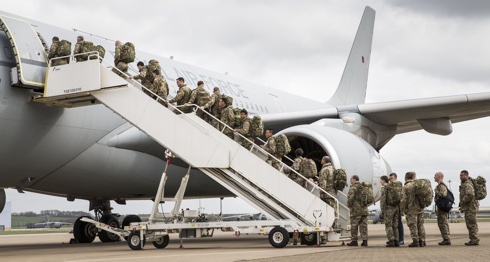

Around 120 UK troops have arrived in Estonia as part of one of the biggest British deployments to Eastern Europe in decades, it was reported by the Ministry of Defence on 17 March. Soldiers from the 5th Battalion The Rifles Battlegroup (5 RIFLES), including members of an Armoured Engineer Squadron, Military Police Detachment, Artillery Group and Port Task Group, arrived at Amari airbase the previous evening.
Troops, having flown from RAF Brize Norton by Voyager aircraft, were welcomed by Estonia’s Defence Minister Margus Tsahkna.
The first chalk of 120 soldiers are fundamental to setting up a UK headquarters in the country before the rest of the UK deployment arrives next month (April), increasing the total number of troops in Estonia to around 800.
The UK is taking a leading role in NATO’s
enhanced Forward Presence, alongside several other contributing nations. Deployments are designed to assure NATO allies of the mutual commitment to collective European security. Working alongside the UK forces this year will be French personnel, and from next year, Danish partners. All are there at the request of the Estonian Government.
RAF reservists train with Norwegian forces
Royal Air Force reservists have been in remote Norway being put through a
strenuous week of extreme cold weather survival training and cross-country
skiing by Norwegian forces.
Nearly 50 reservists from 17 squadrons across the UK trained as part of
Exercise Wintermarch from 12 to 18 March.
The main focus of the week was learning how to travel effectively through the
harsh winter landscape by cross-country skiing. Personnel are also learning
skills such as avalanche survival, crevasse rescue, first aid and basic mountain
safety.
RIN’s 11th GNSS conference
A reminder: RIN’s 11th GNSS conference in Baška, KrK Island, Croatia, 7-9 May 2017. This year’s Baška conference focuses on the latest GNSS topics including:
– The development and modernisation of core systems
– Space-based augmentation systems
– Applications across land, air, sea and location-based services
– Receiver design and GNSS education
Eurocontrol workshop on Free Route Airspace

It was announced by EUROCONTROL on 8 March at the close of the World ATM Congress in Madrid that its workshop on the latest developments in the implementation of Free Route Airspace (FRA) in Europe will allow aircraft to fly more direct routes, reducing fuel burn and cutting delays.
FRA is most effective when it operates cross-border, with aircraft not constrained by specific crossing points on the borders between countries. Two existing cross-border initiatives in the important south east region of Europe are SAXFRA (Slovenia/Austria) and SEAFRA (Bosnia Herzegovina, Croatia and Serbia). At the workshop, representatives from the five air navigation service providers from these countries signed a memorandum of cooperation aimed at merging SAXFRA and SEAFRA, which will generate even greater benefits for European aviation and is a significant step towards achieving a common European Free Route Airspace by 2022.
IHMA 2018 Congress registration now open
The International Harbour Masters’ Association (IHMA) and Informa Australia have announced details of the 11th IHMA Congress, to be held at the Lancaster Hotel in London from 25-28 June 2018. This will be the first time the Congress has been held in London.
Addressing the theme: Ports – Essential for Safe, Efficient and Secure Global Trade, the Congress programme will be designed to appeal to all responsible for the safe, secure and efficient conduct of marine operations in ports and industry organisations working with, or within, ports across all levels of the industry. This is likely to be an attractive event in 2018 for all those with responsibility for port and marine operations and the industry that supports them.
DHS S&T invites Counter-UAS developers to submit tech for assessment
It was announced from Washington, DC on 8 March that the Department of Homeland Security (DHS) Science and Technology Directorate (S&T) is inviting developers of counter-unmanned aerial system (CUAS) technologies to participate in technology assessments.
It is understood that a Request for Information – Participation (RFIP) was released for the 2017 Technical Assessment of Counter Unmanned Aerial Systems Technologies in Cities (TACTIC) programme. Apparently, Selected C-UAS technology solutions will be assessed in an operationally relevant environment.
Record iron ore tonnage from Port Hedland

In a joint effort with Pilbara Ports Authority (PPA), OMC International’s realtime
DUKC® e-Navigation technology helped enable the largest ever iron ore shipment to leave Port Hedland (illustrated) at a record sailing draft of 19.95 metres, Executive Director Dr Terry O’Brien AM said on 7 March.
Dr O’Brien said: ‘Under DUKC® advice a record 270,006 tonnes of iron ore left Port Hedland – the world’s largest bulk export port – on the Fortescue Metals Group loaded ship HL Tubarao on 1 March.’
‘Our technology, which has been operating at Port Hedland for more than 20 years, safely allowed an increased draft of 0.70m over the traditionally conservative static rule, which meant an extra 12,000 tonnes of iron ore could be loaded.’
IAIN World Congress® site online
The 16th World Congress® of the International Association of Institutes of Navigation (IAIN) will be hosted by the Japan Institute of Navigation (JIN). It will be held from November 28 to December 1 at the world-class Makuhari Messe in Chiba, Japan.
Since 1976 the IAIN World Congress has been held in a different region every three years to discuss technical navigation issues. A scientific programme will address all subspecialties and related interests in navigation.
Makuhari New City centres around Makuhari Messe, one of Japan’s world class convention facilities, and spreads out with offices, academic facilities, housing, parks, shopping, and entertainment facilities. It is a city of diverse potential that sees many people from all over Japan and the world every day. Around the skyscrapers, there are the Japanese gardens of Mihama-en and Makuhari Kaihin-koen Park along Makuhari Beach. Walking along the promenade will offer a chance to feel the sun, sea breeze and nature in Tokyo bay area.
ECDIS releases new courses

IAIN Corporate Member ECDIS Ltd report that they have extended their Type Specific ECDIS ACAT (Annual Competency Assurance Training) portfolio to include the new JRC 7201/9201 and Furuno FMD ECDIS equipments (demonstrated in the nearby illustration).
Available online as well as by the new offline downloadable version, ECDIS ACAT is used daily by shipping companies globally. At an average of only £8 per officer per year, the not-for-profit ACAT courses are fast becoming an essential tool for refreshing all training crew in the safe and efficient use of their onboard ECDIS systems.
Commented George Ward, Project Support, ECDIS Ltd: ‘The idea of ECDIS ACAT came from the realisation that crew may use their ECDIS systems for many years after their initial generic training. Companies and vessels have no way of keeping track of their knowledge and ensuring the safety of their crew. With ACAT, ship managers can review, in real-time, the competency levels of their crew by seeing where their weaknesses are. There is significant evidence now that albeit trained and certificated, crews still do not understand the key navigation menus which is failing them during inspections. These modules train them in the top 20 inspectors’ questions.’

